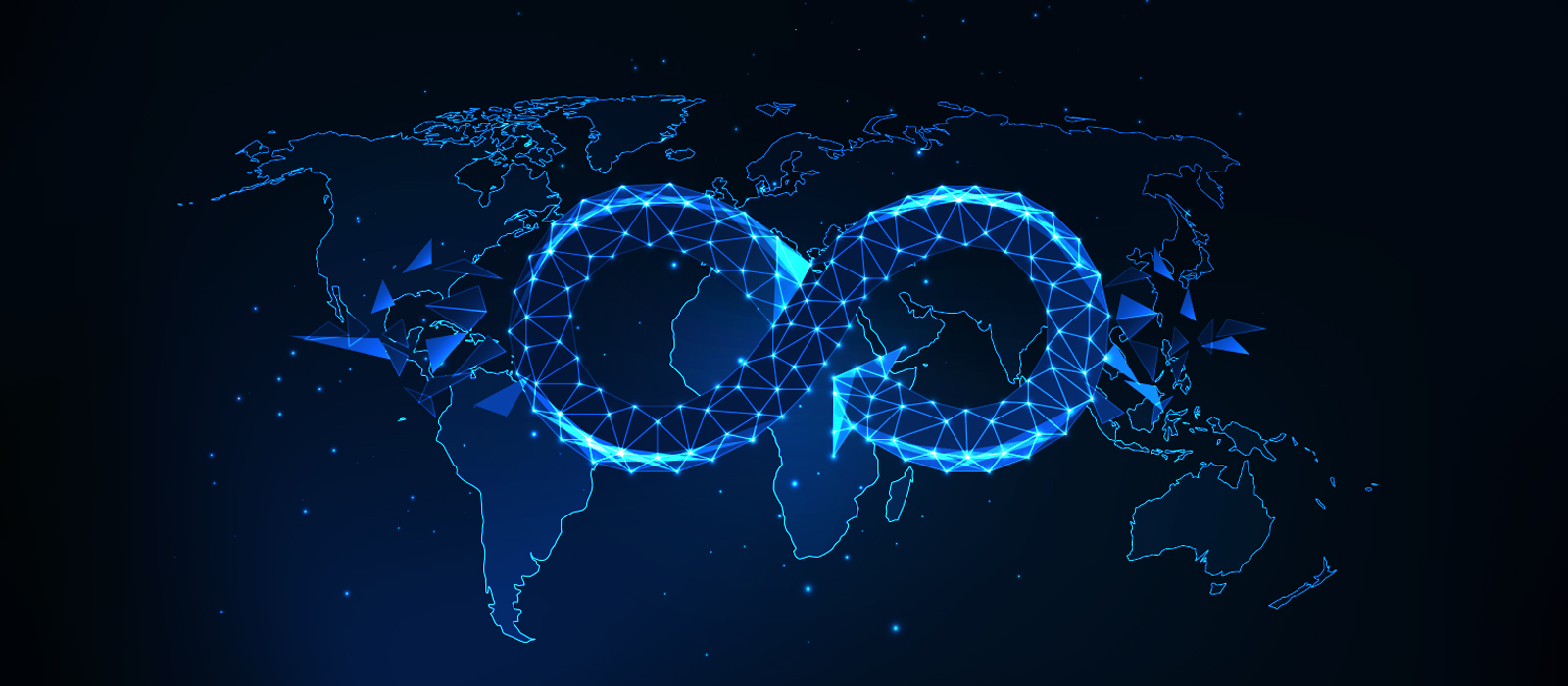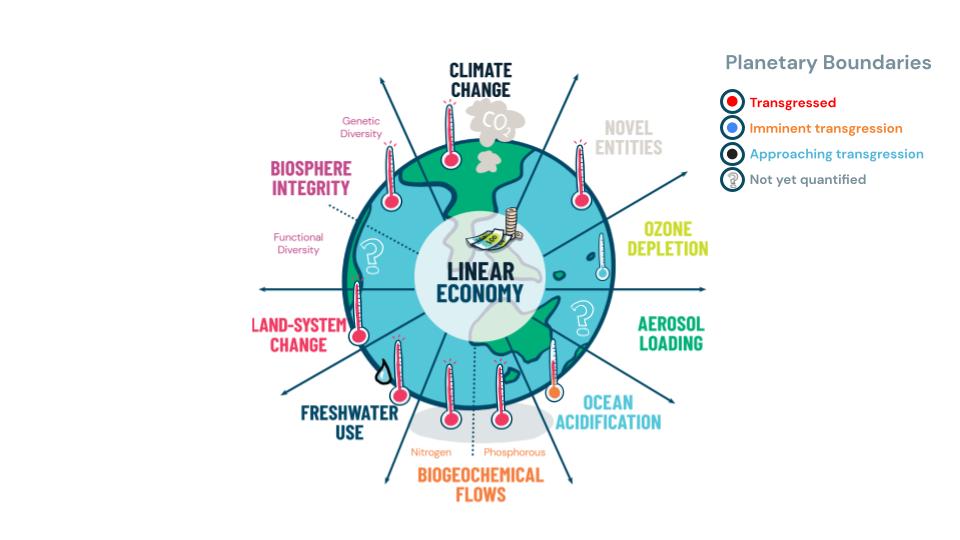Time to mine our minds: circular economy mindset for a decarbonising world

Australia’s metals will be indispensable to renewable energy economies, yet our linear metal value chains are not optimised to meet expected demand. To cultivate a circular economy mindset, what lessons can we take from two decades of safety revolution?
The thinking required to re-examine value creation from mine to market can be likened to mining’s 'safety first' transformation.
Metals have unique properties that lend themselves to circular generative flows, but minds will need to melt and meld if we are to conceive of circularity as B-A-U.
By driving change in leadership, designing out waste, circulating metals, changing procurement practices and designing products for reuse, Australia’s metals producers can empower a circular economy—the only economy that makes sense in the future.
“By 2029 the circular economy will be the only economy.” – Source: Gartner Inc.
Today, Australia conforms to the global linear economy. Known as the ‘take–make–waste' model, linearity relies on scale, creating profits by driving mass production for mass consumption, fuelled by cheap credit and, wherever possible, cheap labour. Climate change, biodiversity loss, social inequity and ocean acidification are all symptoms of one underlying problem: the linear economy (Figure 1).

Image source: Coreo
The linear economy has led to our society transgressing six of the nine planetary boundaries. Planetary boundaries define the safe operating space for humanity within the Earth system—either at a 'safe' distance from thresholds or at dangerous levels, beyond which lies potentially catastrophic environmental degradation and tipping points in Earth systems.
Demand, in today’s linear economy, is infinite. However, the resources required to fund economic profits are not. As emissions rise, as waste piles up, as biodiversity diminishes, as resources are depleted, the linear economy is reaching the end of the line.
So, if future growth is not linear, what is the plan moving forward?
The answer: a transition to the circular economy, designed to be restorative and regenerative. The circular economy is founded on three principles:
- Design out waste and pollution
- Keep products and materials at their highest value for as long as possible
- Regenerate natural and social systems.
A transition to the circular economy will fundamentally change the way capital, material and opportunity flow through society, creating an economy that serves people and nature—rather than one that people and nature serve.
Imagine mineless metals, a construction industry built for deconstruction, supply chains that operate in a closed loop model or net zero materials legacies achieved through collaborations tackling scope 1, 2 and even scope 3 emissions.
Importantly, the circular economy is able to generate social, economic and environmental value without crossing planetary boundaries and can address those that have been transgressed to date, as shown in Figure 2.

Image source: Coreo
Circular economy presents the opportunity for growth and value creation as clearly as it does the opportunity for innovation and sustainable resources management.
Shifting attitudes to health and safety helped refocused our industry and led to significant improvements on mine sites over the last 20 years.
A regulatory approach obligates all employees regardless of role or rank to comply with stringent safety standards, understand their individual accountability in mining operations, and demonstrate leadership in its many forms; the sector has normalised raising the alarm around safety concerns, and staff are entrusted to recommend or initiate workflow improvements via supportive and communication channels.
As a result, mining companies with good safety records have become employers of choice.
Corporate skills, regulatory knowledge and governance structures already exist to shape the industry in a broad sense. These qualities must now be recast beyond sight of the mine to scrutinise the systems and issues implicated in the life-cycles of metals.
The characteristics of a circular economy mindset are explored in the following three strategic insights
Generated from dialogue between mining representatives from 30 countries (World Circular Economy Forum 2021), these insights summarise the key approaches, policies and practices emerging and required for metals to join the circular economy.
What is absolutely clear is the motivation of stakeholders to foster trust in each other and new systems, identify strategic priorities, collaborate rather than compete, and look to best practices and adoption of new technologies.
1. Trust is the invisible wiring that allows systems change to occur
Exploration of new partnerships, collaborations, and conversations required to power the circular economy will all have a common facilitator: trust.
Forging partnerships with suppliers and organisations across mining borders and former competitive boundaries will be bridged only by trust. New opportunities will not be found without a safe space for trying and failing. Metallurgical supply loops cannot be optimised without reliable and transparent data between players. Employees will not become advocates for change themselves without confidence in the vision that their executive team offers. And the mining industry’s social licence to operate is not likely to be viable without trust from all relevant stakeholders.
While trust cannot solve all the challenges, no challenges will be solved without it.
2. Different scales of benefits and values must be embraced
Value delivery across scales needs to inform circular economy strategies, and different regions will continue to take different approaches to advancing circularity. Global networks, large scale producers and extensive ecosystems are well-placed to encourage circularity and new opportunities along global original equipment manufacturer (OEM) supply chains, and transfer technologies and ideas.
At the same time, regional circularity initiatives could play an important role in developing integrated innovation hubs and platforms and joint roadmaps towards a circular economy, to help scale leadership and ambition.
Bottom-up adoption of circularity initiatives by small-to-medium enterprises (SMEs) and supply firms can set the scene for regional mining companies to follow, and can even inform the development of a national circular economy roadmap.
3. Partnership as the new leadership
Circular economy strategies represent significant potential to gain competitive advantage for mining companies.
Despite this, many important circular economy innovations require new partnerships and can only be effectively enabled by policies and systems that recognise the value of moving beyond the current ‘take-make-waste’ machinery of the conventional linear industrial systems.
Advancing low carbon and low waste activities can increase preferential access to responsible sourcing markets, while driving innovations that create new levels of operational efficiencies, and capture new value from formerly liability and cost-oriented waste streams. All this while increasing a beneficial public profile that helps to attract and retain high quality personnel in a tight labour market.
Whether it is coordinating data systems for traceability and transparency from extraction through manufacturing or pooling resources to accelerate system-wide energy technology breakthroughs, collaboration is undeniable to making circular economy progress in this sector.
There will be unprecedented demand for metals and mining to support global decarbonisation. The imperative is now for governments, financiers, producers and buyers of primary and secondary metals to enable circular economy strategies and practices. This will ensure that future metal extraction and use throughout a range of value chains can sustain the needs of new and emerging renewable energy markets. We have limited time available. If we lean into our strengths as a sector and are willing to prospect in new terrain - to mine our minds - we can meet these challenges.
To access resources from the metals and mining sector on how to approach the circular economy, please download ‘Mining for Circularity: Five Strategic Insights’, a World Circular Economy Forum session hosted jointly by Circular Economy Leadership Canada, Smart Prosperity Institute, Materials Efficiency Research Group, and Coreo.
